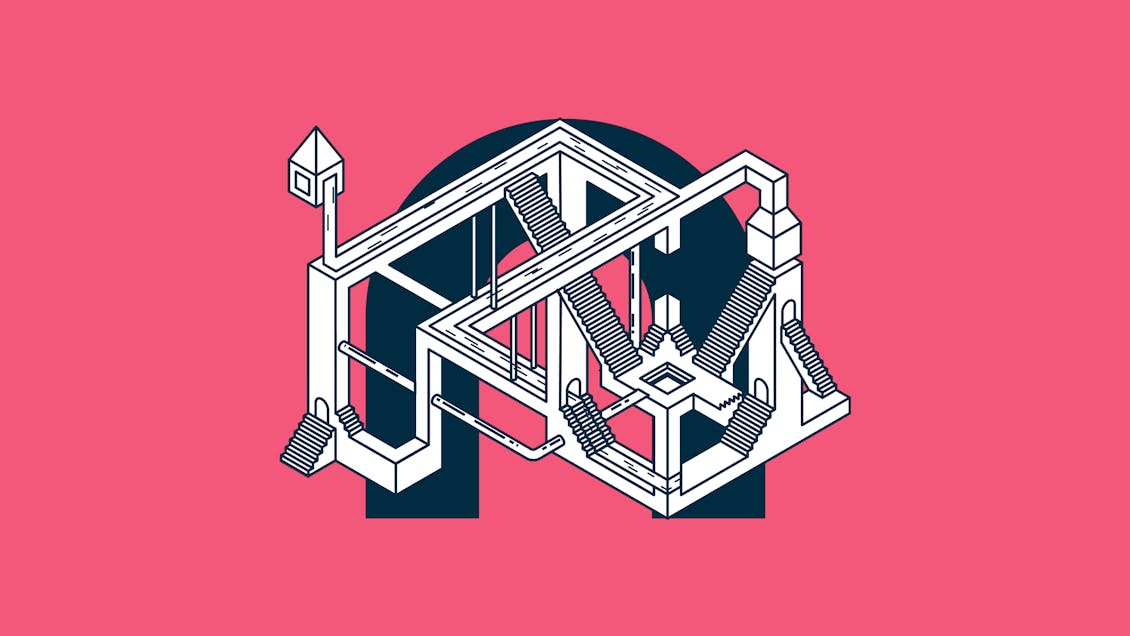Designing for infinite user journeys

It’s time to design for outcomes, not just paths
As UX professionals, we're often taught to map out the "perfect" user journey. We define clear goals we would like our users to achieve, and then we obsess over how to guiding them there:
- We use click path analysis to find the optimal entry pages and ideal click sequences.
- We look at exit pages for turn back opportunities.
- We use steppers to define interaction stages.
- We spend a significant amount of time focused on finding, optimizing, and designing the ideal user journey knowing that journey will never satisfy our entire audience.
Rather than focusing on ideal linear pathways, we should acknowledge that the ideal user journey isn’t common across all users, but one that is unique to each user.
And while all of that is valuable, let’s be honest: even the most optimized journey isn’t going to work for everyone. Rather than define a single optimal path for all of our users, maybe it’s time we shift our attention to what really matters: helping users achieve outcomes — on their terms.
With outcome-driven experience design, we care less about the path a user takes and more about driving users to their most desired outcomes. This allows for more space and time to address the optimization of outcomes and less time worrying about why users are not going from page 2 to page 3 like we’d hoped. At any moment, a user should be able to quickly achieve their end goal rather than achieving the next step in a long sequence.
Here are some strategies to guide your design process in ways that adapt to the user, not the other way around.
What are the ultimate end goals for your users?
Whether your site is an e-commerce property, marketing site, or a media property, you want your users to complete their most desired outcomes. In order to effectively design experiences that support this, you must clearly define the ultimate end goals for your users.
There are many ways to build a comprehensive list of user goals: you can interview users, run facilitated user tests, interview stakeholders, etc. Whatever method you choose, the outcome should be the same and should follow these basic principles:
- Goals should be concise — Don’t build narratives. Keep goals single sentences.
- Goals should be forced ranked — If users on your site could achieve only one goal, what would it be?
- Goals are not time bound — Avoid goals that put specific time restrictions on actions.
- Goals should be attainable — Make sure the goals you are setting can actually be executed.
- Goals should be similarly scaled — Avoid overly complex or overly simple goals. Keep goals as discrete achievable end user tasks.
Capture users at the moment of intent
In order to effectively design experiences that support users to complete their most desired outcomes, you must clearly define the ultimate end goals for your users.
In the world of outcome-driven experiences (e.g. goal-based outcomes), the focus tends to be more on action/reaction responses versus set triggers. We should strive to anticipate a need based on multiple factors and deliver an option that satisfies that need the moment a user indicates they need it. Ideally, this is done dynamically as an AI-driven process that marries user intent with application response. There are ever-growing options in technology that are utilizing this method.
Regardless of the technology, we must still be able to capture users at the moment of intent. Here are some ways to do this:
- Develop goal outcomes and identify how you intend to enable each goal.
- Identify strategic touchpoints by documenting inflection points (i.e., points where users may make decisions).
- Design dynamic content injection — actions and delivery methods for those actions.
Uncover the triggers that motivate action
There is a great distance between intent and action, and there is often an offline decision-making process users go through before accepting larger commitments. Helping users understand the outcomes of their actions helps them be more comfortable with the consequences.
To uncover the triggers that motivate action, you must be prepared to iterate and test. Start thinking of audiences less as demographic or behavioral segments and more like goal cohorts — users that have the same desired outcomes. Build multiple triggers for each goal and deliver triggers at key touch points of user engagement.
Triggers can be complex or as simple as a well-articulated link. Some things to consider when developing your triggers are:
- Test triggers that align with goals and are outcome-driven.
- Develop triggers that align with prior actions.
- Evolve triggers from passive encounters to targeted engagement.
- Track triggers like you would any ad campaign.
Conclusion
Linear, static user journeys are unrealistic depictions of how users will engage with your site. They are often outdated the moment they are completed and can take considerable resources to design effectively. Since users are increasingly traversing sites in unexpected ways, designing for a fixed journey will alienate more and more users. As fewer users fall into the ideal linear journey, more and more effort is required to optimize each and every journey step.
Once you consider that there is no fixed path for all users, you can begin to design for outcomes. Yes, this method can be more complex in the short term, but it can also have a lasting positive influence on your key performance indicators. If your focus is to improve on performance, whether it’s audience engagement, e-commerce sales, or increasing product retention, it’s time to leave fixed linear user journeys behind and start focusing on outcome-driven experiences.



